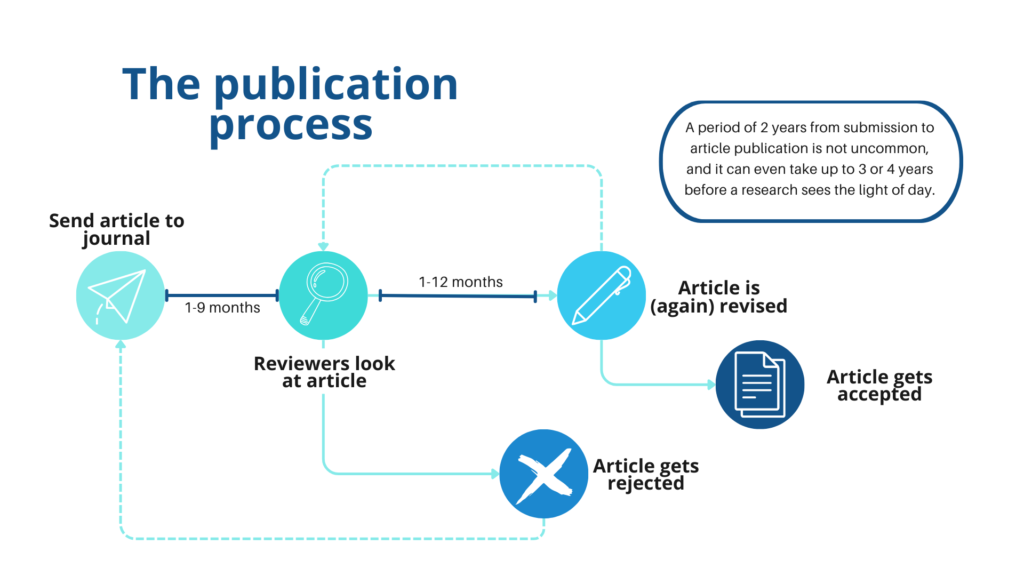What does a researcher at the university actually do? Researchers naturally engage in various activities, but one thing that all researchers are involved in is writing articles. These articles usually cover new research findings and are published in scientific journals. If you aspire to work in academia for life, publishing articles is an essential part of the job. That’s why most researchers devote a lot of time to it. But how do we, the researchers at MultiCUE, actually write an article? There are many steps involved from the initial research idea to an article. And this is not a quick process: the entire process typically takes around 2 years!
It always starts with getting an idea. This idea can be based on results from previous research or on an insight from practice (for example: How come young multilingual children often mix their languages?). Then, as a researcher, you carefully review what is already known about the topic in the existing literature, formulate research questions and expectations (hypotheses), and choose a research design.
For many research questions in MultiCUE, data must be collected from parents and children. This involves recruiting schools, obtaining parental consent, testing children, entering and analyzing data. Throughout all these steps, there is naturally a lot of discussion and deliberation with other researchers in the team. Then, the article can be started. This writing process is often done by multiple researchers and is a true group effort.
But then what? Having an article written is not the end of it. Once there is an article that all involved researchers agree on, it is submitted to a journal. From that moment on, it becomes exciting. It could be that the article is immediately rejected, a so-called “desk rejection.” This can happen, for example, if the editor finds the research not suitable for the journal.

If the editor sees potential in the article, they may send it out to 2 or 3 anonymous reviewers. These reviewers are fellow researchers with knowledge of the subject. The reviewers critically read the article and provide detailed comments. Based on those comments, the editor makes a decision: (1) the article is accepted for publication immediately, (2) the article may be revised and resubmitted, (3) the article is rejected. Options (2) and (3) are common – option (1) is rare to never.
Most often, an article needs to be revised based on the comments from the reviewers. This revision is a lot of work and typically takes several months. Then, the revised article goes back to the anonymous reviewers. If they are satisfied, the article is published. However, researchers are particularly skilled in asking critical questions and therefore not easily satisfied. More often, there are comments again and the possibility of a rejection… And then the whole process starts over again, at a different journal.
In short, publishing an article is a learning and creative process, but it is also a lengthy process. So, it’s always a celebration when a research article sees the light of day!
